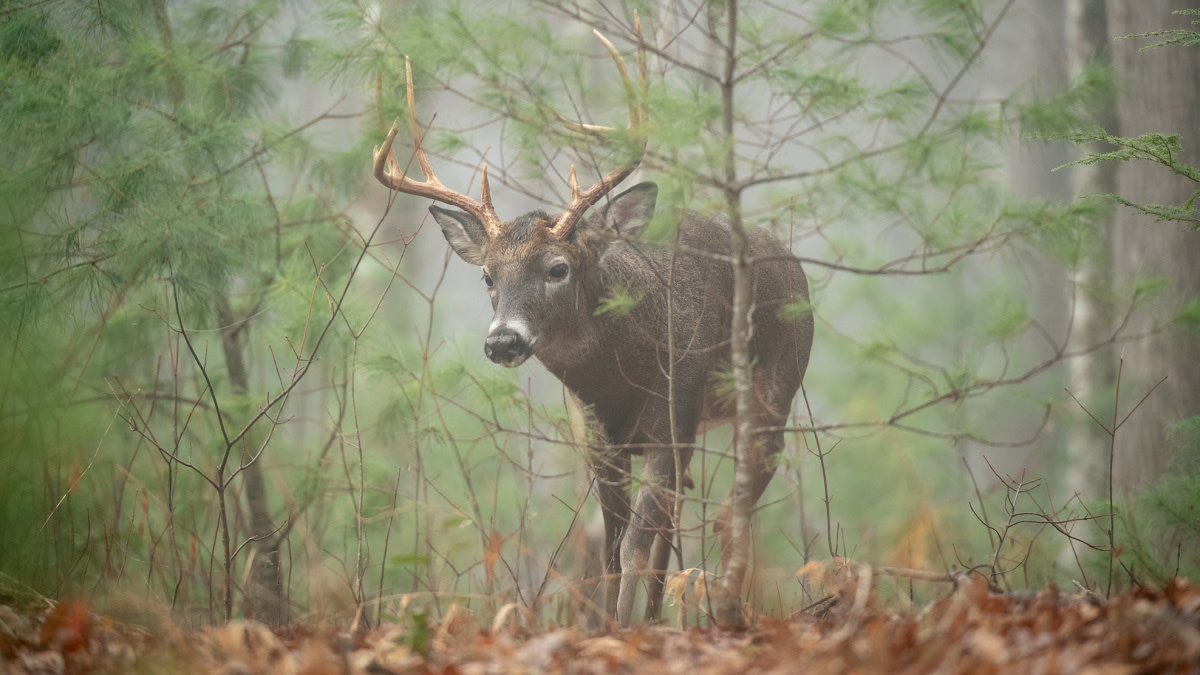
Hunting deer, especially mature bucks, involves a constant balancing act between getting into positions that allow shot opportunities while trying to keep deer unaware of your presence.
Each time you go into a stand or spot, you risk educating deer. The key is to know when to be aggressive and when to be conservative. While there are many factors that consistently successful hunters consider when making this determination, barometric pressure is one of the most common and influential variables taken into account. But is there any substance behind this common claim?
What Scientists Say
If we look at the impact of barometric pressure on deer movement only through the lens of what the science tells us, this would be a short discussion. No, barometric pressure does not seem to consistently impact deer movement (nor any other weather factor for that matter).
A Mississippi State University study comparing fine-scale deer movements in relation to environmental influences, such as barometric pressure, found that “a general pattern in how weather influenced deer movements was not observed, except that temperature influenced deer movements more than any other weather variable.” Another study out of Texas, conducted by Dr. Mickey Hellickson and Dr. Karl Miller, said “no correlation was found between hourly means in male activity and temperature or barometric pressure.”
“Something tells me that weather must impact when deer are moving, but it has been shown to not be correlated,” said Matt Ross, assistant director of conservation for the Quality Deer Management Association. “There’s a half a dozen projects out there that have tied all those data points to weather events—barometric pressure, cold fronts, rain, and haven’t found anything.”
What Big Buck Killers Say
Science be damned, deer hunters still believe. Many of the most ardent supporters of watching the weather and pressure are those deer hunters that often fill their tags with wall hangers.
“The higher the pressure, the better the movement,” said Mark Drury of Drury Outdoors. “That movement just follows the pressure. Much like the stock ticker goes up and down, the deer movement goes the same way.”
Drury notes that how the barometric pressure compares to the average for that time of year is the real key.
“High pressure during the early part of the season might be just above 30.1 or 30.00, but during the later part of the season, when the atmosphere is cooling, when you get pressure readings above 30.3 or 30.4, high pressure is defined differently,” he said. “30.1 at the beginning of the season is high, 30.1 at the end of the season is average or below average.”
With this being the case, Drury recommends keying in on the days when the pressure is high relative to the average for the season, especially those days following a big front.
Jeff Sturgis of Whitetail Habitat Solutions targets fronts in similar manner. He believes barometric pressure is one of the factors that make a difference. “I’m looking for that big cold front to come through with clearing skies and cool conditions. And when you have those conditions you have a high barometric pressure.”
Making Sense of it All
So, what’s a hunter to do with these conflicting perspectives?
While I don’t question the validity of the aforementioned studies, I do wonder if we’re measuring for the same end result. Researchers are looking for statistically significant and consistent correlations. But what I and many deer hunters care about is a slight edge that might result in a mature buck moving just a bit further or a few minutes earlier than normal. A difference of five minutes or 50 yards could be the difference between filling a tag and seeing nothing. But would that show up as significant in a study?
I can’t say with 100% certainty that barometric pressure can provide that extra inch. Maybe, maybe not. With this being the case, I’m certainly not hanging my hat on any one factor like pressure to determine if I should hunt or not.
But when trying to decide which days I’ll be most aggressive, I’ll take any edge I can get. Barometric pressure seems to be just such a factor—if only anecdotally.
Feature image via Matt Hansen.







Conversation